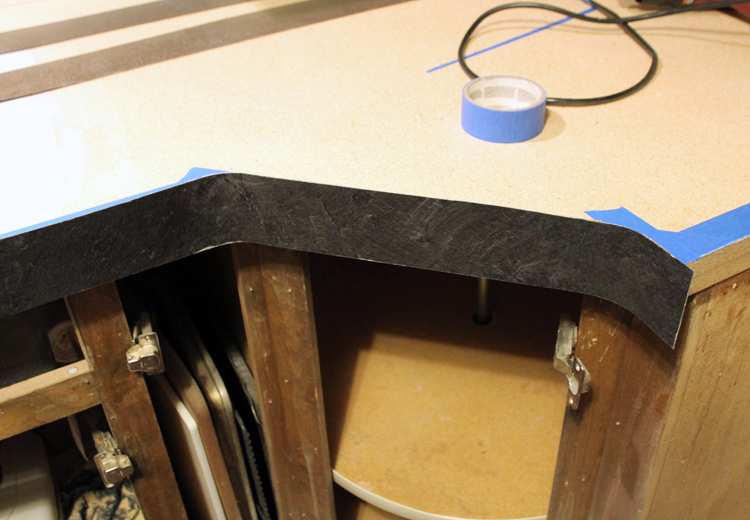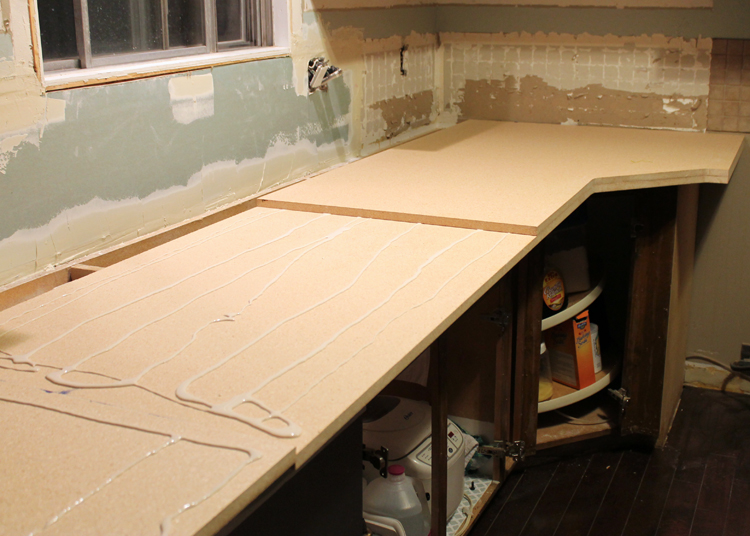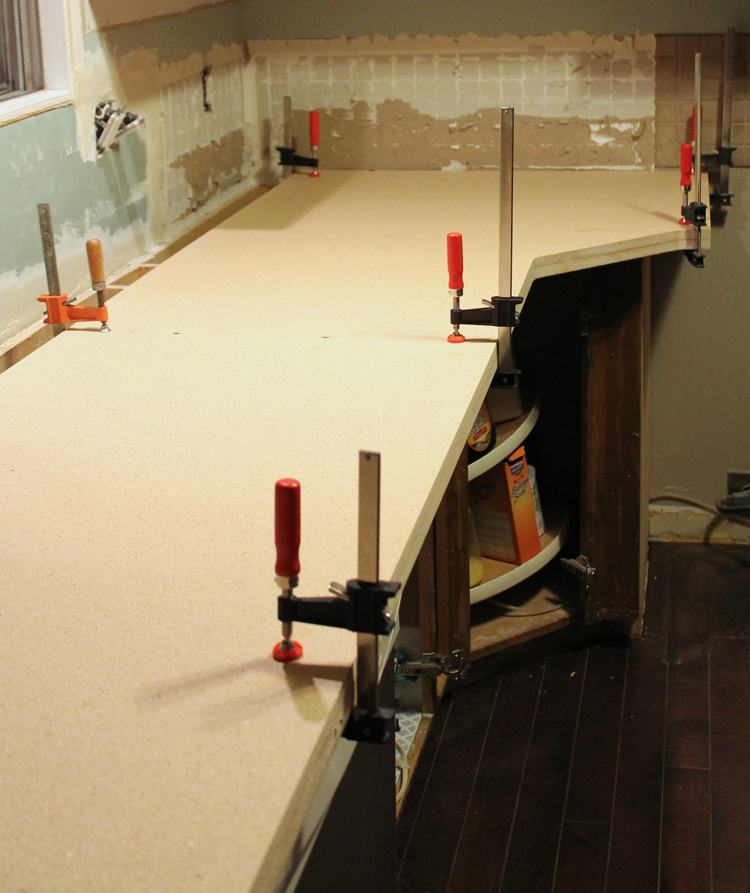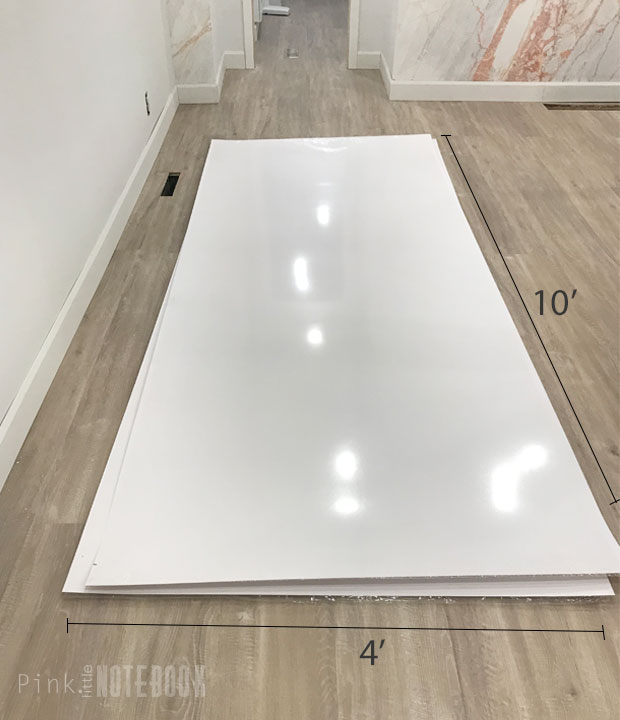Laminate countertops have long been a popular choice for homeowners seeking an affordable yet stylish option for their kitchen surfaces. In this comprehensive guide, we’ll explore everything you need to know about applying laminate countertops, including the benefits, installation process, design options, and maintenance tips.
The Benefits of Laminate Countertops
Laminate countertops offer a range of benefits that make them an attractive choice for kitchen remodels and renovations. Firstly, they are highly affordable compared to other countertop materials such as granite or quartz, making them accessible to homeowners on a budget. Despite their lower cost, laminate countertops are available in a wide variety of colors, patterns, and finishes, allowing you to achieve the look of more expensive materials without breaking the bank.
Additionally, laminate countertops are incredibly durable and resistant to scratches, stains, and heat, making them ideal for high-traffic kitchen environments. Their non-porous surface also makes them easy to clean and maintain, requiring only mild soap and water for routine cleaning. With proper care, laminate countertops can retain their appearance and functionality for many years, making them a practical and cost-effective choice for any kitchen.

Installation Process and Considerations
Installing laminate countertops is a relatively straightforward process that can be completed by DIY enthusiasts or professional contractors. The first step is to accurately measure the dimensions of your kitchen cabinets and cut the laminate sheets to size accordingly. It’s essential to leave a slight overhang along the edges to accommodate trim and ensure a seamless fit.
Once the laminate sheets are cut, they are adhered to the substrate using contact cement or adhesive. Care must be taken to apply the adhesive evenly and avoid air bubbles or wrinkles on the laminate surface. The edges of the countertops can be finished with edge banding or trim pieces to create a polished look and protect against moisture infiltration.
During installation, it’s crucial to pay attention to details such as seam placement and alignment to achieve a professional-looking result. Proper sealing of seams and edges is also essential to prevent water damage and ensure the longevity of the countertops. Overall, while laminate countertop installation is relatively simple, it requires precision and attention to detail to achieve the best results.

Design Options and Customization
One of the key advantages of laminate countertops is the vast array of design options available. From classic solid colors to realistic stone and wood grain patterns, there’s a laminate design to suit every kitchen style and aesthetic preference. Additionally, many manufacturers offer custom color-matching services, allowing you to create a unique look that complements your cabinetry and decor.
In addition to color and pattern options, laminate countertops can also be customized with a variety of edge profiles to achieve the desired look. Popular edge profiles include bullnose, bevel, and ogee, each offering its distinctive aesthetic appeal. By selecting the right combination of color, pattern, and edge profile, you can create a custom laminate countertop that enhances the overall design of your kitchen.
Maintenance Tips for Longevity
While laminate countertops are known for their durability and low maintenance requirements, proper care is still essential to ensure they remain in optimal condition. To prevent scratches and damage to the surface, avoid cutting directly on the laminate countertop and use cutting boards or trivets for hot pans and dishes.
Routine cleaning with a mild soap and water solution is usually sufficient to remove dirt and debris from the surface of the laminate. For stubborn stains, a non-abrasive household cleaner can be used, but avoid harsh chemicals or abrasive scrubbers that may damage the laminate finish.
It’s also essential to promptly wipe up any spills to prevent staining or discoloration of the laminate surface. While laminate countertops are resistant to most household chemicals and liquids, prolonged exposure to acidic or abrasive substances can cause damage over time.

Common Mistakes to Avoid:
Neglecting to leave a slight overhang when cutting laminate sheets, resulting in uneven edges or gaps during installation.
Failing to properly seal seams and edges, leads to water damage and deterioration of the laminate over time.
Use abrasive cleaners or scouring pads that can scratch or dull the surface of the laminate countertop.
Cutting directly on the laminate surface without using a cutting board, results in scratches and damage to the finish.
Can laminate countertops be repaired if they become damaged?
Yes, minor scratches and chips in laminate countertops can often be repaired using laminate repair kits available at hardware stores. For more extensive damage, professional repair services may be required.
Are laminate countertops heat resistant?
While laminate countertops are relatively heat resistant, they can be damaged by prolonged exposure to high temperatures. It’s recommended to use trivets or hot pads to protect the laminate surface from heat damage.
Can I install a laminate countertop over existing countertops?
Yes, laminate countertops can typically be installed over existing countertops as long as the substrate is in good condition and properly prepared. However, it’s essential to ensure that the existing countertops are clean, dry, and free of any loose or damaged material before installation.
How long do laminate countertops typically last?
With proper care and maintenance, laminate countertops can last for many years. The lifespan of laminate countertops depends on factors such as usage, maintenance practices, and exposure to heat and moisture.
Are there any design limitations with laminate countertops?
While laminate countertops offer a wide range of design options, including various colors, patterns, and edge profiles, they may not have the same level of customization as natural stone or solid surface materials. Additionally, certain design elements, such as intricate edge profiles or seamless seams, may be more challenging to achieve with laminate countertops

How to Build DIY LAMINATE COUNTERTOPS with EXPOSED PLYWOOD Edges Modern Builds

How to DIY Laminate Countertops (Itu0027ll Save You SO Much Money)

How to DIY Laminate Countertops (Itu0027ll Save You SO Much Money)

Building DIY WOOD COUNTERTOPS from PLYWOOD u0026 LAMINATE for $300

DIY Laminate Countertops – Pink Little NotebookPink Little Notebook

Concrete coutertops over laminate countertops – step-by-step – DIY

Related articles:
- Vintage Laminate Countertops
- Laminate Countertops Makeover
- Refinish Laminate Countertops
- Cutting Laminate Countertops
- Retro Laminate Countertops
- Laminate Countertops For Bathroom
- Black Marble Laminate Countertop
- Painting Kitchen Laminate Countertops
- Quartz Laminate Countertops
- Laminate Countertops Installation